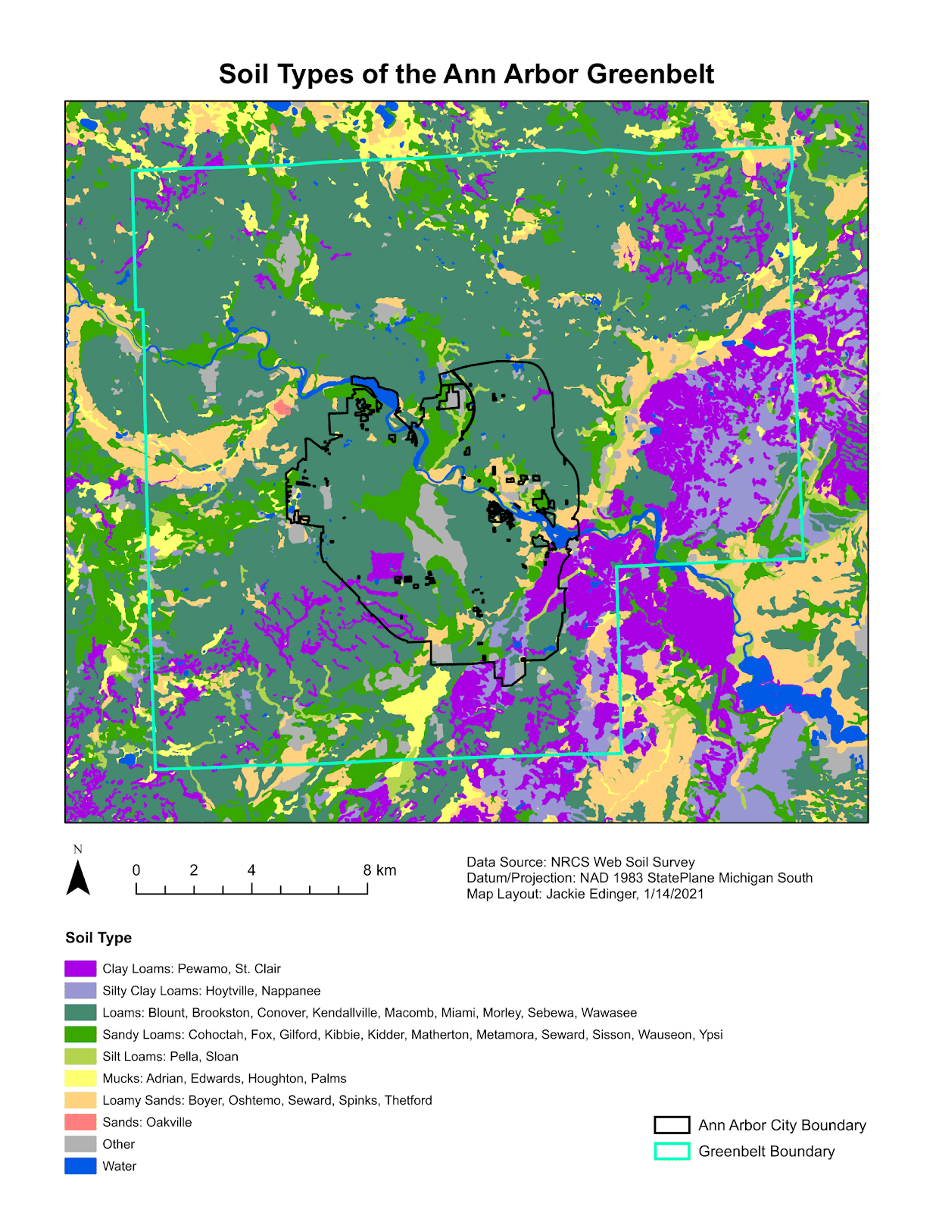Abstract:
The Open Space and Parkland Preservation Millage was approved by the residents of Ann Arbor in November 2003 as a way to protect productive farmland, prevent the destruction of natural landscapes, and preserve the rural character surrounding Ann Arbor. Commonly known as the Greenbelt Program, the millage provides funds to preserve and protect open space, farmland, natural habitats, and the City’s source waters inside and outside the city limits. More than halfway through the 30-year millage in 2021, the Greenbelt Program consists of over 6,200 acres of protected land on more than 70 parcels. While successful, the program lacks adequate ways to report impact and motivate support beyond acres preserved and funds leveraged. Like many organizations working to protect land, they are in need of additional ways to assess and communicate more meaningful measures of conservation value, such as quantifying ecosystem services. Our goal was to develop a series of dynamic geoprocessing tools to quantify specific ecosystem service value of the Greenbelt’s current portfolio of properties and any new properties added in the future. This will allow the City staff and residents of Ann Arbor to have an ongoing understanding of and ability to communicate the value of individual properties and entire land conservation programs. We focused on two categories of ecosystem services: (1) above and belowground carbon storage and (2) water quality.
Data and Resources

| Field | Value |
|---|---|
| Publisher | |
| Modified | 2021-07-27 |
| Release Date | 2021-06-24 |
| Spatial / Geographical Coverage Area | POLYGON ((-443.84321086574 42.196699038498, -443.84321086574 42.338290982263, -443.58400365338 42.338290982263, -443.58400365338 42.196699038498)) |
| Temporal Coverage | Sunday, September 27, 2020 - 00:00 to Sunday, October 25, 2020 - 00:00 |
| Author | |
| Contact Name | Yifan Luo |
| Contact Email | |
| Public Access Level | Public |
Publication Date:
Thursday, June 24, 2021

![[Open Data]](https://assets.okfn.org/images/ok_buttons/od_80x15_blue.png)